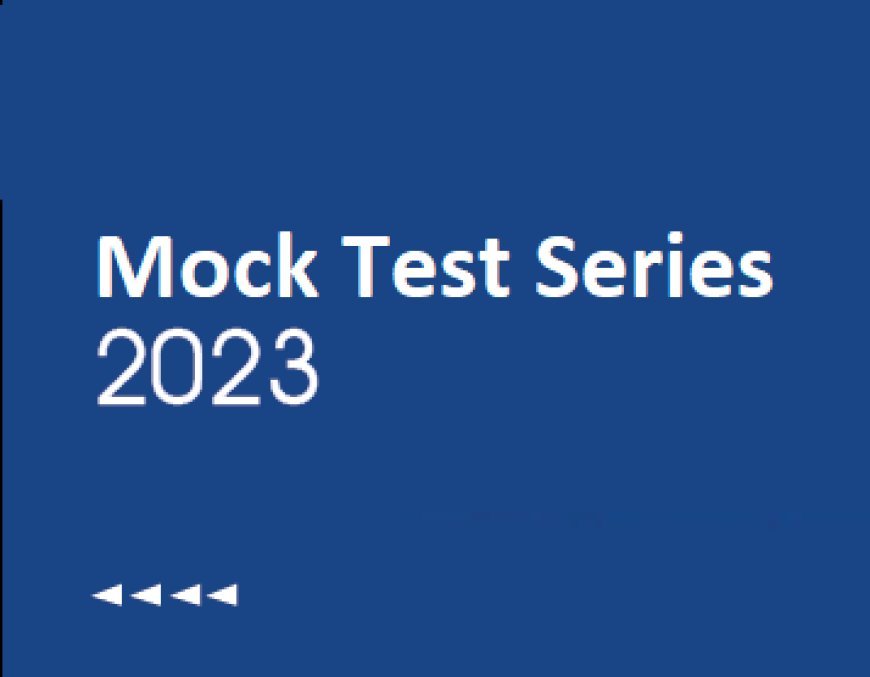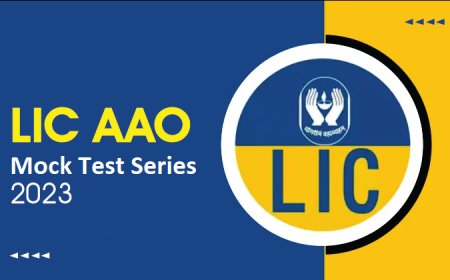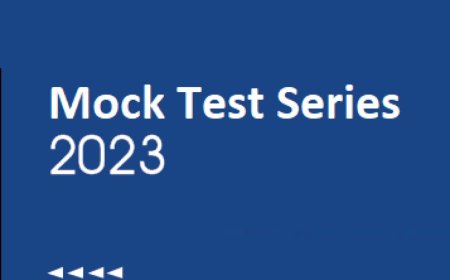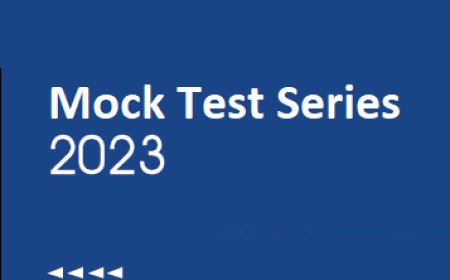AAO Exam -CT 1: Reasoning (Mathematical Inequalities)
AAO Exam -CT 1: Reasoning (Mathematical Inequalities)

DIRECTIONS: In the following question assuming the given statements to be true, find which of the conclusion among the given conclusions is/are definitely true and then give your answers accordingly.
Statements : T ≥ I, S < B, T = B, I > J
Conclusions :
I. B > J
II. T > S
-
Only conclusion I follows
-
Only conclusion II follows
-
Either conclusion I or II follows
-
Neither conclusion I nor II follows
Given Statements : T ≥ I, S < B, T = B, I > J
On combining : S < B = T ≥ I > J
I. B > J → True (as B = T ≥ I > J, it is definitely true, Hence B > J is true )
II. T > S → True ( as T = B > S, it is definitely true, Hence T > S is true )
since both the conclusions are definitely true.
Hence, Both I and II follows.
Statement: C > M, M < K, T = K, T > L
Conclusions:
I: T > M
II: K > L
-
If conclusion I follows.
-
If conclusion II follows.
-
If either conclusion I or II follows.
-
If neither conclusion I nor II follows.
According to the given information-
Statement: C > M, M < K, T = K, T > L
On combining we get: C > M < K = T > L
Conclusions:
I: T > M → True (It is given that T is greater than M, which is true according to the given question)
II: K > L → Ture (It is given that K is greater than L, which is true according to the given question)
If both conclusions I and II follow.
Directions: In each of the following questions assuming the given statement to be true, find which of the conclusions among given conclusions is / are definitely true and then give your answers accordingly.
Statement: P > Q < U ≤ Y < W = T > K < I
Conclusions:
I. U < T
II. U = T
-
Only Conclusion II follows
-
Either conclusion I or II follows
-
Neither Conclusion I nor II follows
-
Both Conclusion I and II follows
Given Statement: P > Q < U ≤ Y < W = T > K < I
Conclusions:
I. U < T → True (U ≤ Y < W = T, U < T)
II. U = T → False (U ≤ Y < W = T, U < T)
Hence, Only I follows.
Direction: In the following question assuming the given statements to be true, find which of the conclusion among given some conclusion is/are definitely true and then give your answers accordingly:
Statement:
C < R < I ≤ S ≤ E ≤ A = N > O < G < Y > B ≥ D
Conclusions:
I. C < G
II. R < O
III. I > O
-
Only Conclusion I is true
-
Only Conclusion II is true
-
Only Conclusion III is true
-
All are true
Statement:
C < R < I ≤ S ≤ E ≤ A = N > O < G < Y > B ≥ D
Conclusions:
I. C < N → False (C < R < I ≤ S ≤ E ≤ A = N > O < G → No definite relation between the two can be determined)
II. R < O → False (R < I ≤ S ≤ E ≤ A = N > O → No definite relation between the two can be determined)
III. I > O → False (I ≤ S ≤ E ≤ A = N > O → No definite relation between the two can be determined)
Hence, None is true.
Direction: In the following question assuming the given statements to be true, find which of the conclusion among given some conclusion is/are definitely true and then give your answers accordingly:
Statement:
C < R < I ≤ T ≤ S = Y > P ≥ A < L < D < F ≥ G ≥ H
Conclusions:
I. Y > C
II. Y > D
III. I < A
-
Only Conclusion II is True
-
Only Conclusion III is True
-
Both Conclusion I and II is True
-
Both Conclusion I and IIi is True
Statement:
C < R < I ≤ T ≤ S = Y > P ≥ A < L < D < F ≥ G ≥ H
Conclusions:
I. Y > C → True (C < R < I ≤ T ≤ S = Y → C < Y also, Y > C)
II. Y > D → False (Y > P ≥ A < L < D, as definite relationship between Y and D cannot be determined).
III. I < A → False (I ≤ T ≤ S = Y > P ≥ A , as definite relationship between I and A cannot be determined).
Hence, Only conclusion I is true
Direction: In the following question assuming the given statements to be true, find which of the conclusion among given some conclusion is/are definitely true and then give your answers accordingly:
Statement:
P = I > T > H > Z = R ≥ W > K ≥ Y > A < Q > X
Conclusions:
I. P > W
II. H = K
III. T > A
-
Only Conclusion I is True
-
Only Conclusion II is True
-
Only Conclusion III is True
-
All Conclusion I, II and III is True
Statement:
P = I > T > H > Z = R ≥ W > K ≥ Y > A < Q > X
Conclusions:
I. P > W → True (P = I > T > H > Z = R ≥ W → P > W)
II. H = K → False (H > Z = R ≥ W > K → H > K)
III. T > A → True (T > H > Z = R ≥ W > K ≥ Y > A → T > A)
Hence, Both Conclusion I and III are true
Directions: In the following question assuming the given statements to be true, find which of the conclusion among given conclusions is/are definitely true and then give your answers accordingly.
Statements:
B < U = S ≤ T ≤ A = N < D < I > G ≥ E > O = W
Conclusions:
I. B < D
II. A > O
-
Only Conclusion II follows
-
Both Conclusion I and II follows
-
Either Conclusion I or Conclusion 2 follows
-
Neither Conclusion I nor II follows
Given:
Statements:
B < U = S ≤ T ≤ A = N < D < I > G ≥ E > O = W
Conclusions:
I. B < D → True (B < U = S ≤ T ≤ A = N < D → B < D)
II. A > O → False (A = N < D < I > G ≥ E > O → As the signs between A and O are opposite so, no definite relation between can be determined)
Hence, only conclusion I follows.
Directions: In the following question, assume the given statements to be true, find which of the conclusions among given conclusions is/are definitely true, and then give your answers accordingly.
Statements: A = B < C ≤ D, E > D, E > F > G ≥ H
Conclusions:
I. A > E
II. C ≥ H
-
Only conclusion I follows
-
Only conclusion II follows
-
Either conclusion I or II follows
-
Both conclusion I and II follows
Given statements: A = B < C ≤ D, E > D, F > G ≥ H
On combining: A = B < C ≤ D < E > F > G ≥ H
Conclusions:
I. A > E → False ( A = B < C ≤ D < E)
II. C ≥ H → False (C ≤ D < E > F > G ≥ H, no relation between C and H can be determined)
Hence, Neither conclusion I or II follows
Directions: In the following question assuming the given statements to be true, find which of the conclusion among given conclusions is/are definitely true, and then give your answers accordingly.
Statements: 9 = 8 < 3 ≥ 5 > 2; 3 ≤ 1 = 6 ≥ 7 > 4
Conclusions:
I. 2 < 1
II. 9 ≥ 7
-
Only conclusions II follows
-
Either conclusions I or II follows
-
Neither conclusions I or II follows
-
Both conclusions I and II follows
Given statements: 9 = 8 < 3 ≥ 5 > 2; 3 ≤ 1 = 6 ≥ 7 > 4
On combining: 9 = 8 < 3 ≤ 1 = 6 ≥ 7 > 4; 3 ≥ 5 > 2
I. 2 < 1 → True (2 < 5 ≤ 3 ≤ 1 → 2 < 1)
II. 9 ≥ 7 → False (9 = 8 < 3 ≤ 1 = 6 ≥ 7 → As relation between them cannot be determined)
Hence, only conclusion I follow is the correct answer.
Directions: In the following question assuming the given statements to be true, find which of the conclusion among given conclusions is/are definitely true, and then give your answers accordingly.
Statements: P < X > R ≤ U < S = T ≤ L = M ≤ N ≥ H = I
Conclusions:
I. S < N
II. S = N
-
Only I is true
-
Only II is true
-
Both I and II is true
-
Neither I nor II is true
Given Statements: P < X > R ≤ U < S = T ≤ L = M ≤ N ≥ H = I
Conclusions:
I. S < N → False (S = T ≤ L = M ≤ N → S ≤ N)
II. S = N → False (S = T ≤ L = M ≤ N → S ≤ N)
For either - or condition,
S ≤ N means S < N or S = N
So, conclusion 1 and conclusion 2 forms complementary pair.
Hence, Either I or II is True is the correct answer.





